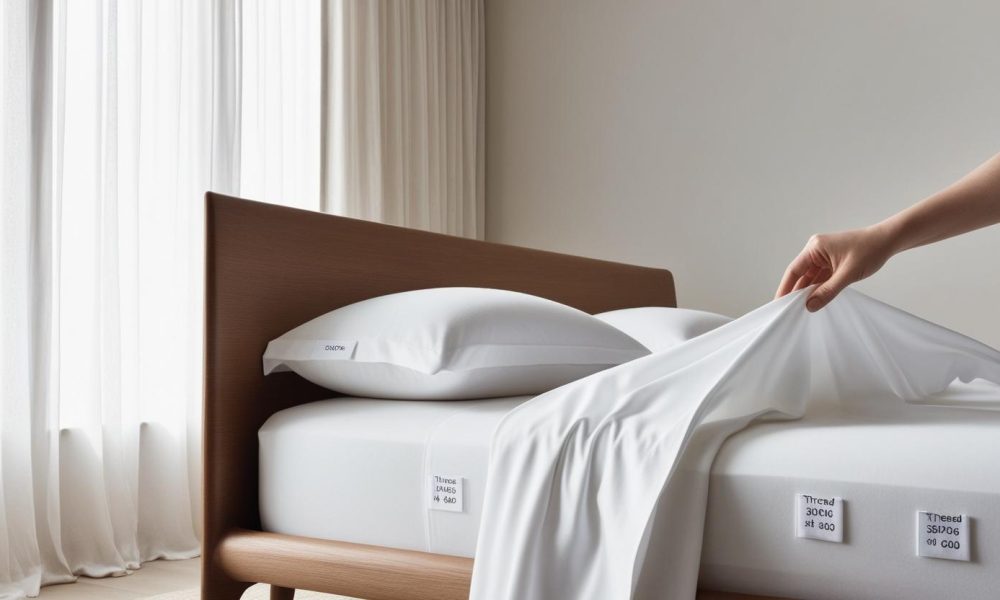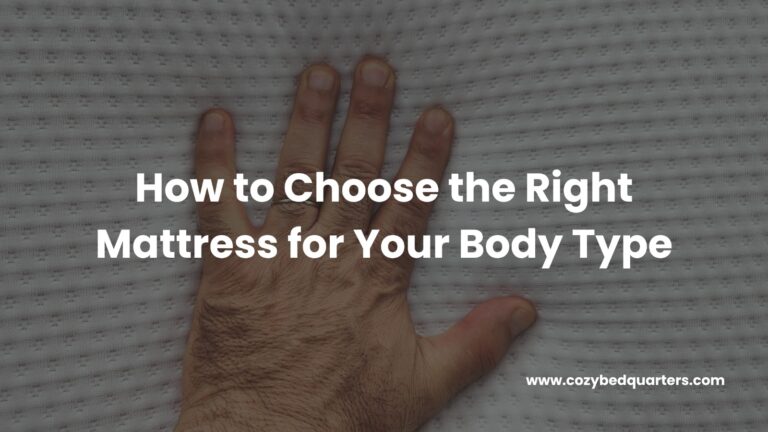Bedding Quality Thread Count: The Truth You Need to Know
Bedding quality thread count matters—but not in the way most people think. While many shoppers assume that a higher thread count automatically means better sheets, the reality is far more nuanced. In truth, softness, durability, and breathability depend just as much—if not more—on factors like fiber type, weave style, and manufacturing quality. Choosing sheets that truly feel luxurious means looking beyond flashy numbers to understand what those numbers really mean. This guide unpacks the truth about thread count, so you can confidently select bedding that delivers comfort, longevity, and real sleep-enhancing performance. For a deeper dive, explore our ultimate guide on how to clean a bed mattress.
Key Takeaways
- Thread count refers to threads per square inch but isn’t the sole indicator of sheet quality.
- Material, weave, and fiber origin affect softness, breathability, and durability more than high numbers.
- Ideal thread count varies by fabric—300–500 is often a sweet spot for natural fibers like cotton.
What Is Thread Count?
Thread count is the number of threads woven both vertically (warp) and horizontally (weft) into one square inch of fabric. It’s long been used as a shorthand for sheet quality—but unfortunately, it doesn’t tell the whole story. The idea that “higher is better” is a myth that leaves many buyers with stiff, unbreathable sheets that cost more than they should.
Instead of focusing solely on numbers, savvy shoppers consider the type of fiber used, the weave, and whether the threads are single- or multi-ply. For example, a 400 thread count sheet made from extra-long staple Egyptian cotton will outperform and outlast a 1000 thread count sheet made from short-staple or synthetic blends. In other words, quality beats quantity every time.
So while thread count can give you a general sense of density, it’s just one part of the equation. True bedding quality thread count is about context—not just the count itself. For more insight, check out our guide on how to choose the best organic bed sheets.
Interested in creating a more sustainable bedroom? Read this guide to eco-friendly bed frames to complement your bedding choices.
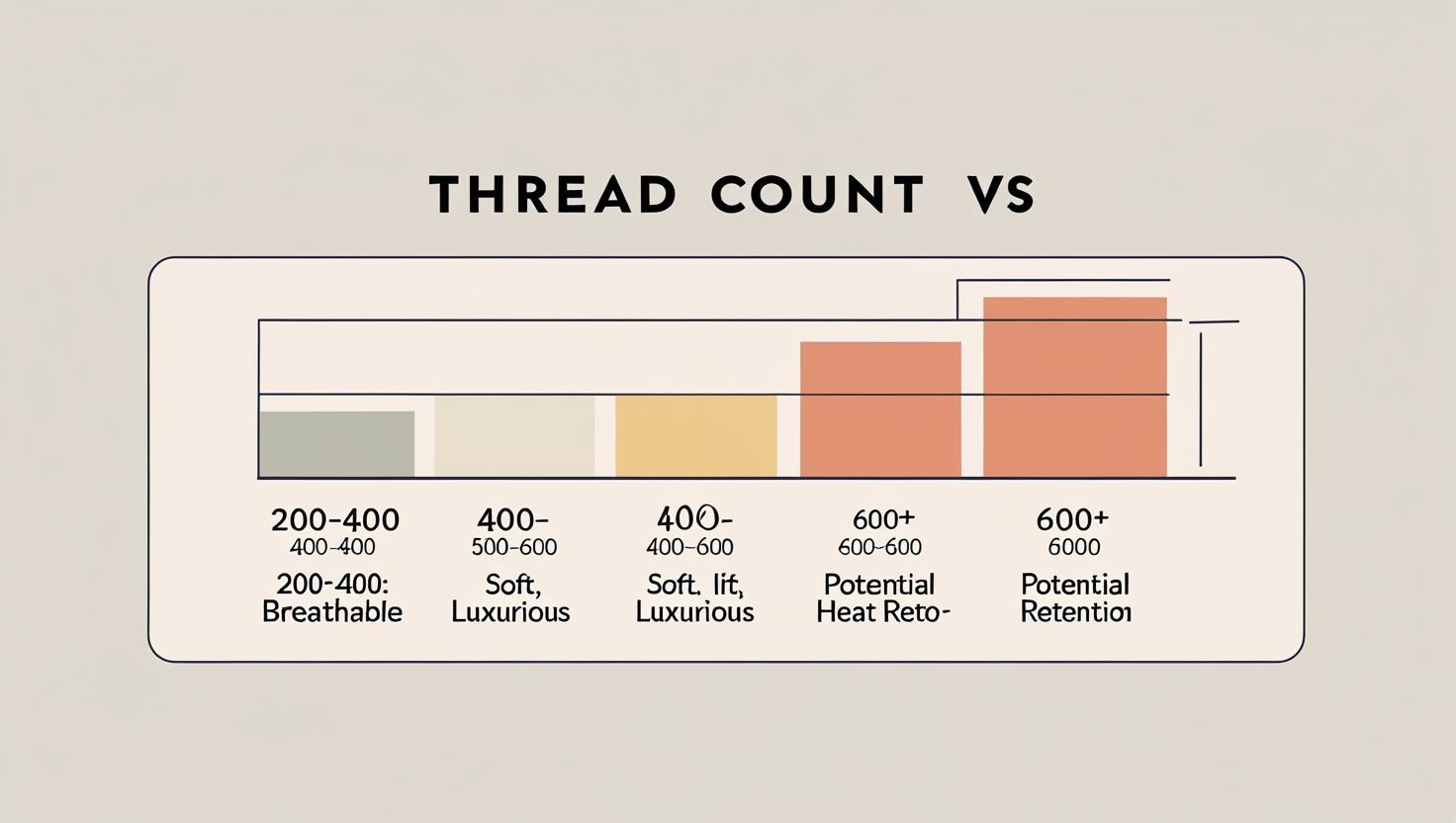
The Significance of Thread Count in Bedding Quality
Thread count plays a role in how your sheets feel and perform, but it interacts with other factors like fiber type, weave structure, and finishing techniques. Here’s how to evaluate its real impact. For a related read, don’t miss our article on cooling sheets for hot sleepers.
Softness and Feel
Softness isn’t just about numbers. A thread count of 300–500 made from high-quality long staple cotton—like Egyptian or Supima—delivers a silky, breathable finish. Go much higher, and you might sacrifice comfort for density. Sheets above 600 often use multi-ply yarns, which feel bulkier and less breathable.
Ever stayed in a luxury hotel and wondered why their sheets feel perfect? It’s likely because they use quality fibers in the optimal thread count range. Brands like Brooklinen and Parachute Home also use this principle—premium cotton and the sweet spot of 300–500. According to the Sleep Foundation, sheets within this range tend to balance comfort and durability best.
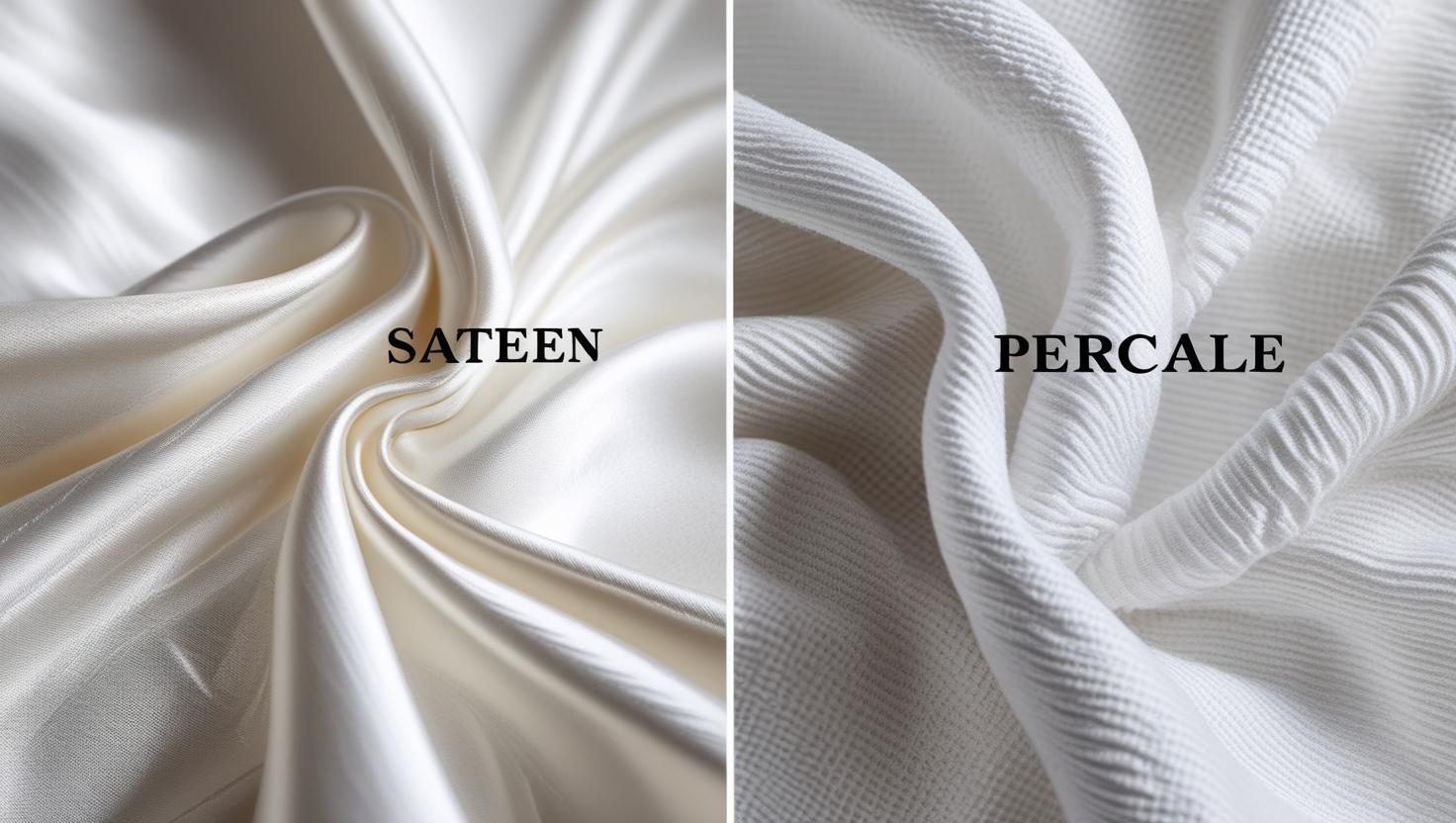
Durability
Durability comes down to fiber strength and weave tightness. Long-staple cotton fibers resist pilling, fraying, and tearing far better than short-staple cotton. Even at a 250 thread count, good cotton can outlast a cheap 800 count sheet. This is why investment-grade bedding often lists fiber origin up front.
Want your bedroom setup to last? Pairing high-quality sheets with a sustainable wood bed frame can enhance durability and eco-conscious living.
Breathability and Temperature Control
Overheating at night? Ultra-high thread count sheets can be the culprit. More threads often mean denser weaves, trapping body heat and moisture. For cool sleepers or summer nights, a 300–400 thread count in percale or bamboo viscose offers a cool, dry feel. It’s like flipping to the cool side of the pillow—every night. Learn more in our guide on bamboo vs. cotton sheets.
For comparison: a 300 thread count bamboo sheet breathes like linen but feels like silk, making it a top choice for hot climates or night sweats.
Weave Type
The type of weave changes the game. Sateen, with its tight one-yarn-under and three-yarn-over pattern, creates a luminous sheen and drapes beautifully. It feels luxurious, but can retain more heat. Percale, by contrast, uses a balanced one-over-one-under weave for a matte finish and crisp feel, ideal for warmer temperatures or minimalist preferences.
Think of sateen as your cozy winter sweater, and percale as your breathable summer T-shirt.
Marketing Gimmicks
Don’t fall for inflated thread counts. Some brands twist low-quality fibers into multi-ply yarns to artificially inflate the number—an 800 thread count that’s actually four 200-thread plies. This doesn’t improve comfort or durability; in fact, it can do the opposite. Stick with single-ply yarns and trusted certifications.
When in doubt, look for transparency in labeling and avoid buzzwords without substance. The Consumer Reports guide on thread count is a helpful resource.
Ideal Thread Count by Material
Different fabrics perform best at different thread counts. Here’s a quick-reference guide to help you choose:
| Material | Ideal Thread Count |
|---|---|
| Egyptian Cotton | 300–500 |
| Pima Cotton | 200–400 |
| Bamboo Viscose | 250–400 |
| Linen | 80–140 |
| Microfiber (Synthetic) | 200–300 |
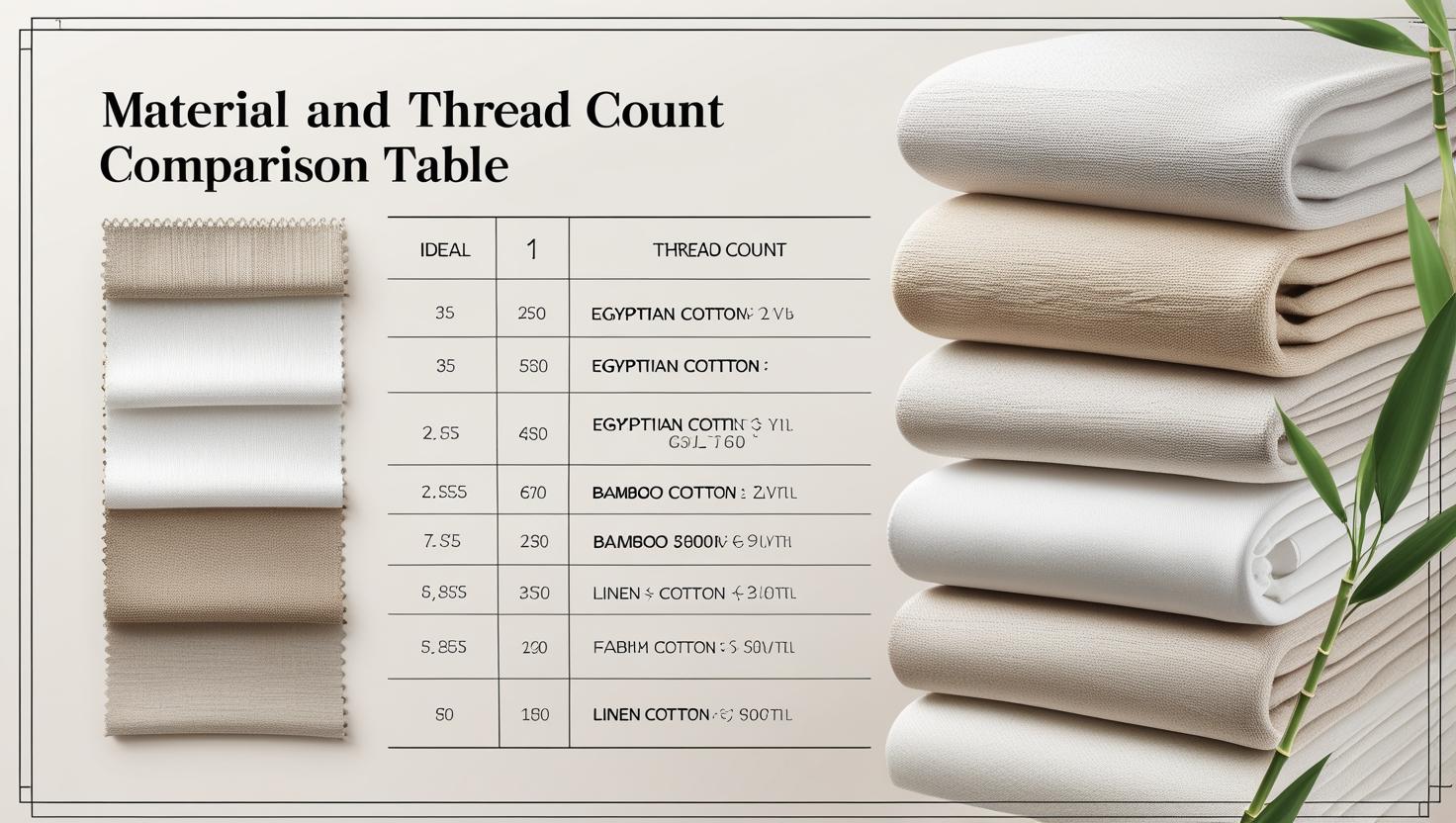
How to Choose High-Quality Bedding
Don’t let thread count be your only guide. The best bedding choices come from a holistic view of materials, manufacturing, and personal needs. For more insight, visit our guide on choosing the right bed sheets.
- Fiber Origin: Look for extra-long staple (ELS) cotton like Egyptian or Supima for unmatched softness and longevity.
- Certifications: OEKO-TEX ensures the sheets are free from harmful chemicals, while GOTS covers organic integrity and sustainability. These labels mean you’re getting a safe, ethical product.
- Weave Preference: If you run hot, go for crisp percale. Want cozy luxury? Sateen’s your friend.
- Finish and Stitching: Inspect for double-stitched hems and clean, tight seams—a sign of craftsmanship that lasts through washes.
Thinking beyond thread count? Discover how cardboard bed frames are reshaping the idea of sustainable living.
Some Common Thread Count Myths You Should Not Believe
- Myth: “Higher is always better.”
Truth: After 600, benefits plateau or even decline. More isn’t always more. - Myth: “Thread count is the only factor in comfort.”
Truth: Comfort relies just as much on fiber type, weave, and finish. Focus on feel, not just figures.
Understanding these myths helps you shop smarter and get better value for your money. Informed buyers sleep better—literally!
Final Thoughts
Understanding bedding quality thread count helps you make better choices. Don’t be misled by inflated numbers or clever marketing. Instead, look at the big picture: fiber quality, weave, certifications, and construction. When you shop with care, you’ll end up with sheets that feel better, last longer, and help you sleep soundly. And if you’re wondering about the environmental impact of your choices, check out our article on organic vs. synthetic bedding.
For a comprehensive overview of sustainable bedroom design, check out this article from The Roundup.
Looking for durability and eco-conscious choices? See what experts recommend in this piece from BigBeds.com.
Explore this insightful blog on Yawnder.com to learn how to find the right eco-friendly frame for your needs.
FAQ
- Is a higher thread count always better?
- No. Thread counts above 600 often do not improve comfort and may reduce breathability due to denser weaves that trap heat.
- What’s the best thread count for hot sleepers?
- Look for bamboo viscose or percale cotton sheets with a 300–400 thread count for optimal airflow and cooling comfort.
- What materials feel softest at lower thread counts?
- Egyptian and Pima cotton feel luxuriously soft even at 300 thread count due to their long staple fibers and smooth finish.
Related Reading from Cozy Bed Quarters
- Your Ultimate Guide on How to Clean a Bed Mattress
- How to Clean Stains Out of a Mattress
- How to Choose the Right Bed Sheets

